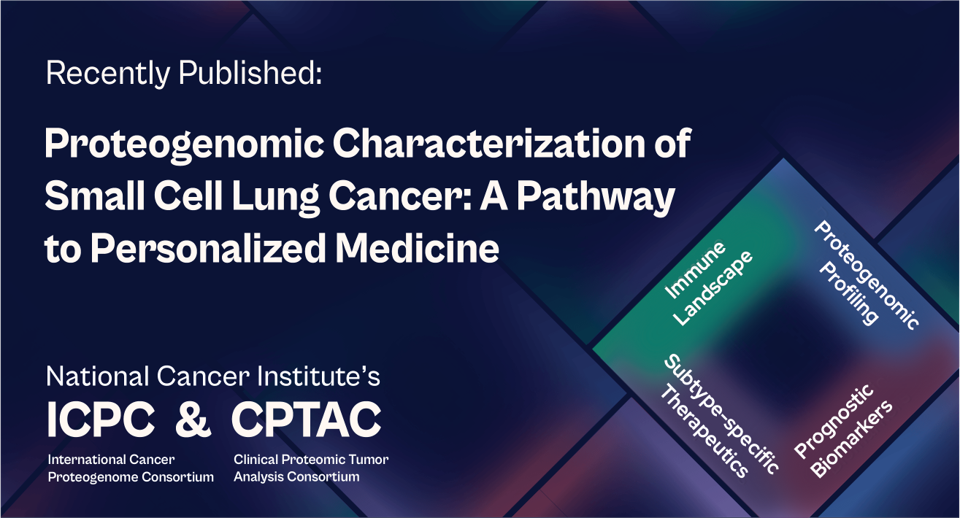Small cell lung cancer (SCLC) is an aggressive form of lung malignancy with historically poor prognoses and limited options for targeted treatment. The low availability of suitable biospecimens has also hampered large molecular characterization efforts. A multi-institutional study led by researchers from Tongji University, Shanghai Tech University, and University of Chinese Academy of Sciences in collaboration with researchers from the National Cancer Institute’s (NCI) International Cancer Proteogenome Consortium (ICPC) recently published in Cell integrates genomics, transcriptomics, proteomics, and phosphoproteomics for primary tumors and paired normal adjacent tissues of 112 treatment-naïve SCLC patients. The findings in this work not only enhance our understanding of SCLC biology but also aim to advance clinical practices, providing a solid foundation for future research in the field.
 Researchers identified HMGB3 and CASP10 as key biomarkers with implications for prognosis and therapy. Elevated tumor expression of HMGB3 was correlated with poorer survival, consistent with its role as an oncogenic driver that promotes cancer cell migration. Conversely, CASP10 was associated with better patient outcomes, suggesting a role in protective mechanisms against disease progression.
Researchers identified HMGB3 and CASP10 as key biomarkers with implications for prognosis and therapy. Elevated tumor expression of HMGB3 was correlated with poorer survival, consistent with its role as an oncogenic driver that promotes cancer cell migration. Conversely, CASP10 was associated with better patient outcomes, suggesting a role in protective mechanisms against disease progression.
Investigating the immune landscape of SCLC, ZFHX3 mutations were linked to increased immune infiltration and tumor mutational burden, with affected patients exhibiting better survival rates and responsiveness to immunotherapy. Encouraging preliminary data from ongoing immunotherapy trials supports the hypothesis that patients with ZFHX3 mutation may receive more benefit from neoadjuvant PD-1/PD-L1 blockade combined with chemotherapy.
The study identified four subtypes of SCLC (nmf1, 2, 3, and 4) using multi-omic clustering, each with distinct molecular characteristics and therapeutic vulnerabilities. These subtype-specific therapeutic strategies were validated through patient-derived xenograft (PDX) and cell line-derived xenograft (CDX) models, demonstrating the potential of personalized treatments based on proteogenomic analysis.
| Subtype | Characteristics | Therapeutic Vulnerabilities |
| nmf1 | High proliferation, E2F activity, and replication stress | ATR and TOP1 inhibitors (e.g., etoposide + cisplatin) |
| nmf2 | High DLL3 protein levels, low REST mRNA levels | DLL3-targeted therapies |
| nmf3 | Elevated RTK signaling activity | Anlotinib (multi-target tyrosine kinase inhibitor) |
| nmf4 | High MYC expression | AURK inhibitors (e.g., alisertib) |
Ultimately, these findings underscore the effectiveness of combining genetic and proteomic profiling. The study not only adds valuable insights to our comprehension of the molecular landscape of SCLC but also sets the stage for the development of more targeted and personalized treatment approaches, promising improved efficacy in the management of this aggressive form of lung cancer.

